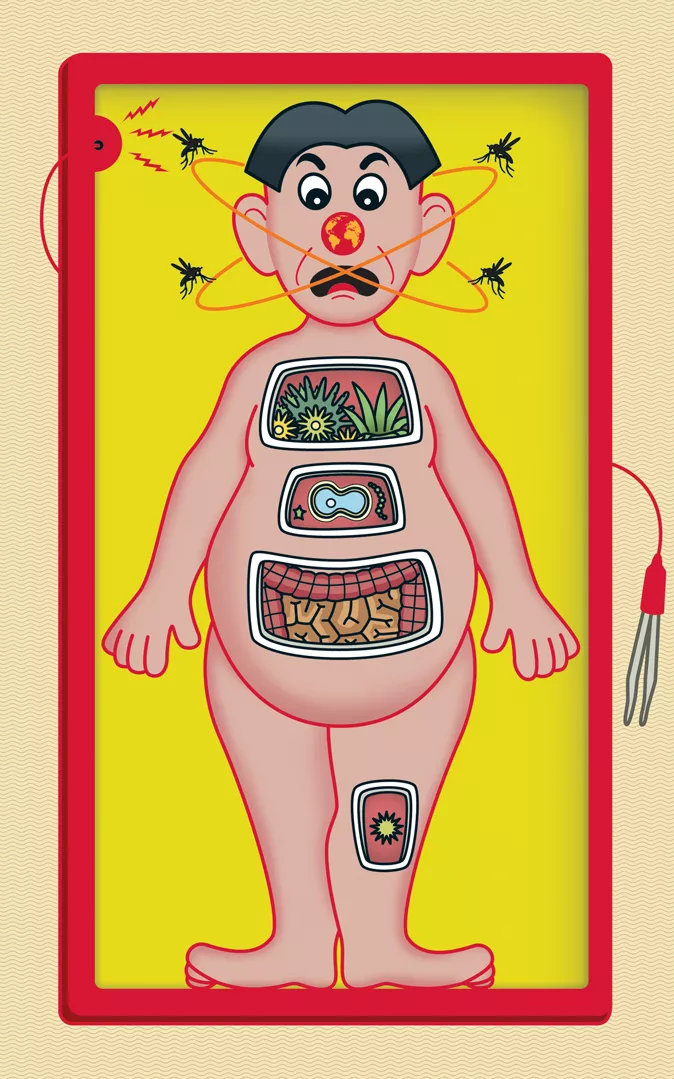Here's How Not to Catch Global Warming Fever
How to protect yourself from climate-related illnesses

Climate change may well be the public health challenge of our time—it's already compromising the water supply and the quality of our drinking water and increasing the spread of infectious diseases. You don't have to be fleeing a wildfire or stuck in a sewage-contaminated hurricane zone to get sick. The World Health Organization estimates that by 2030 global warming will cause an additional 250,000 annual deaths from heat stress and diseases. Here are a few ways to shield yourself and your family from some climate-change-related health threats.
Mosquitoes, ticks, and fleas are multiplying, moving into new areas, and biting more people. The CDC reports that the number of vector-bitten people and pets has tripled in the United States since 2004. More tick bites mean more Lyme disease, while mosquitoes are hastening the spread of heartworm and bringing new diseases like Zika to the U.S. mainland. It's crucial to use an EPA-registered insect repellent and to conduct tick scans upon return from forested areas. Empty out items that hold water to curb mosquito breeding.
As the planet heats up, bacteria, which reproduce more quickly in warm temperatures, are having a field day. Waterborne infections are expected to rise as droughts concentrate pathogens like giardia and floods overwhelm water-treatment systems. Meanwhile, antibiotic-resistant bacteria are becoming more common. Curbing antibiotic use in humans and farm animals is one immediate way to address the latter threat. If you're a carnivore, seek out farms and butchers that sell meat raised without antibiotics or antimicrobials.
Rates of asthma and allergies have risen by 12 percent in the past decade, partly due to longer growing seasons—which put pollen into the air earlier and at higher counts—and humidity, which breeds mold. If you suffer from allergies or asthma, get used to checking the Air Quality Index before leaving home. Also, close your windows, change clothes when you come in from outside, and wear an N95 mask while doing yard work.
Studies show that rising CO2 levels could be changing how water moves through plants, depleting protein, iron, and zinc from staples like rice and wheat, which could leave millions of people nutrient deficient. Women and children in particular (mostly those in poor countries) will be more vulnerable to anemia and other diseases. Scientists are working to develop more nutritious plants. In the meantime, you can eat whole grains instead of processed ones, vary fruit and vegetable types and colors, and choose seafood over industrial meats.
Skin cancer risks could spike as hotter days prompt people to wear fewer clothes. Dermatologists predict that rising temperatures will increase the number of cases of skin cancer by 10 percent annually. Slather on lots of sunscreen, ideally brands that don't contain oxybenzone or octinoxate, which contribute to coral bleaching. If you see a mole that shifts shape or color, go to a doctor immediately.
This article appeared in the January/February 2019 edition with the headline "Global Warming Fever."
 The Magazine of The Sierra Club
The Magazine of The Sierra Club



